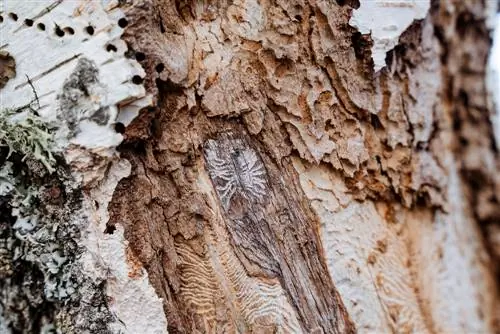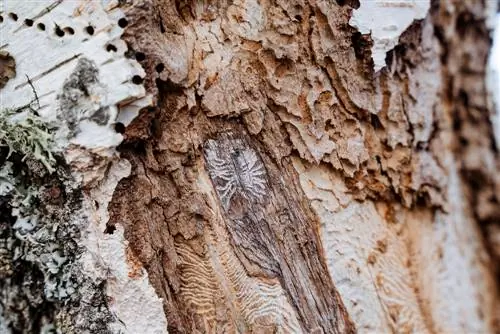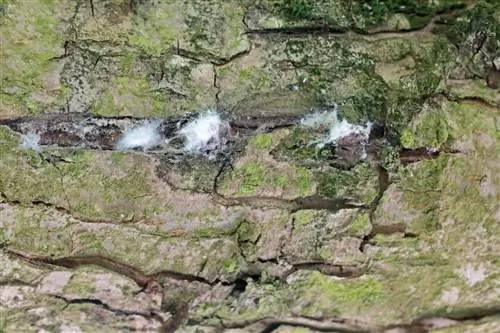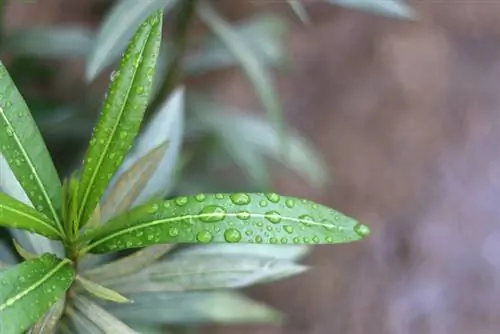- Author admin [email protected].
- Public 2023-12-16 16:46.
- Last modified 2025-01-23 11:22.
It is not a good sign if sawdust accumulates on the tree trunk. The list of potential culprits ranges from dreaded pests to welcome garden residents. Read helpful tips for your root cause analysis here.

Which animal causes sawdust on the tree trunk?
Sawdust on tree trunks is often caused by wood-destroying insects such as bark beetles, longhorned beetles or carpenter bees. It may be a secondary symptom of a tree disease and should prompt investigation for primary disease symptoms.
Which animal causes sawdust on the tree trunk?
If there is sawdust on the tree trunk, it is usually drilling dustwood-destroying insects (xylophages) or other small animals. The following list names common pests, insects and small animals that cause holes in tree trunks:
- Beetles: bark beetles, longhorned beetles, jewel beetles, longhorned beetles.
- Butterflies: wood borer, willow borer butterfly.
- Hymenoptera: carpenter bee, giant wood wasp, hornet.
- Small animals: woodpecker, nuthatch, bat, squirrel, dormouse.
Where do holes in the tree come from if there is sawdust on the tree trunk?
Sawdust on the tree trunk is the result whenfirst settlersdrill holes in the trunk orsecond settlers use and convert the existing caves for their own purposes.
Typical first settlers are pests such as longhorned beetles and bark beetles, which produce mountains of drilling dust when building ramming chambers. Typical secondary colonizers are carpenter bees and wasps, which throw copious amounts of drilling chips out of the tree holes during construction work to build nests.
Is my tree sick if there is sawdust on the tree trunk?
Sawdust on the tree trunk is asecondary symptom of a tree disease. If trees suffer from fungal or bacterial infections, parasitic beneficiaries are not far away. Woodpeckers hammer breeding holes into the rotten wood and beetles bore feeding passages into the trunk. There are often ants on the bark and there is drill dust at the base of the trunk. Then the ant colony probably converted existing holes into residences.
Sawdust on the tree trunk is therefore always an important reason to meticulously examine the conifer or deciduous tree for primary disease symptoms.
Tip
Don’t leave a bark beetle-infested tree trunk standing
Bark beetle infestation on garden trees cannot be controlled with an insecticide. Only tree felling has proven to be an effective control method. Even in a natural garden, you should not leave the tree stump standing as an ecologically valuable dead wood. The bark beetle rabble can overwinter as eggs, caterpillars and imago in the sawn-off tree trunk and strike again the next year.






